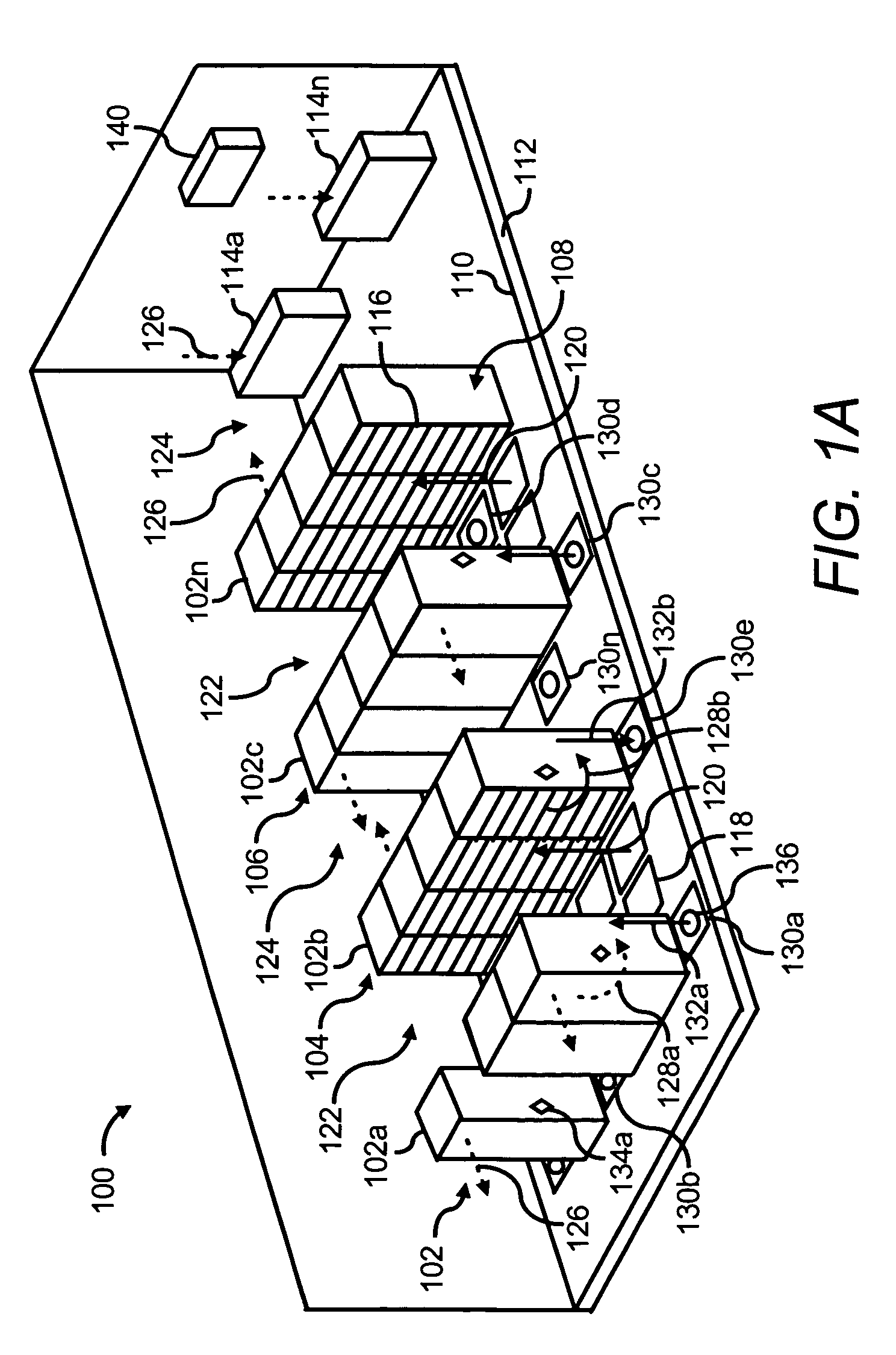Air re-circulation effect reduction system
a technology of air recirculation and effect reduction, which is applied in the field of air recirculation effect reduction system, can solve the problems of reducing the efficiency at which the computer system is cooled, reducing the efficiency at which the air conditioning unit operates, and typically dispersing relatively significant amounts of heat in the computer system, so as to reduce the effects of adverse air recirculation and reduce the effect of air recirculation
- Summary
- Abstract
- Description
- Claims
- Application Information
AI Technical Summary
Benefits of technology
Problems solved by technology
Method used
Image
Examples
Embodiment Construction
[0013]For simplicity and illustrative purposes, the present invention is described by referring mainly to an exemplary embodiment thereof. In the following description, numerous specific details are set forth in order to provide a thorough understanding of the present invention. It will be apparent however, to one of ordinary skill in the art, that the present invention may be practiced without limitation to these specific details. In other instances, well known methods and structures have not been described in detail so as not to unnecessarily obscure the present invention.
[0014]The adverse effects of air re-circulation in a room containing heat generating devices, such as, hot spot formations, may substantially be reduced through implementation of the systems and methods described herein below. More particularly, secondary vent tiles may be positioned and operated to one or both of change the pressure distribution of re-circulating airflow to thereby divert the airflow and mix coo...
PUM
 Login to View More
Login to View More Abstract
Description
Claims
Application Information
 Login to View More
Login to View More - R&D
- Intellectual Property
- Life Sciences
- Materials
- Tech Scout
- Unparalleled Data Quality
- Higher Quality Content
- 60% Fewer Hallucinations
Browse by: Latest US Patents, China's latest patents, Technical Efficacy Thesaurus, Application Domain, Technology Topic, Popular Technical Reports.
© 2025 PatSnap. All rights reserved.Legal|Privacy policy|Modern Slavery Act Transparency Statement|Sitemap|About US| Contact US: help@patsnap.com



